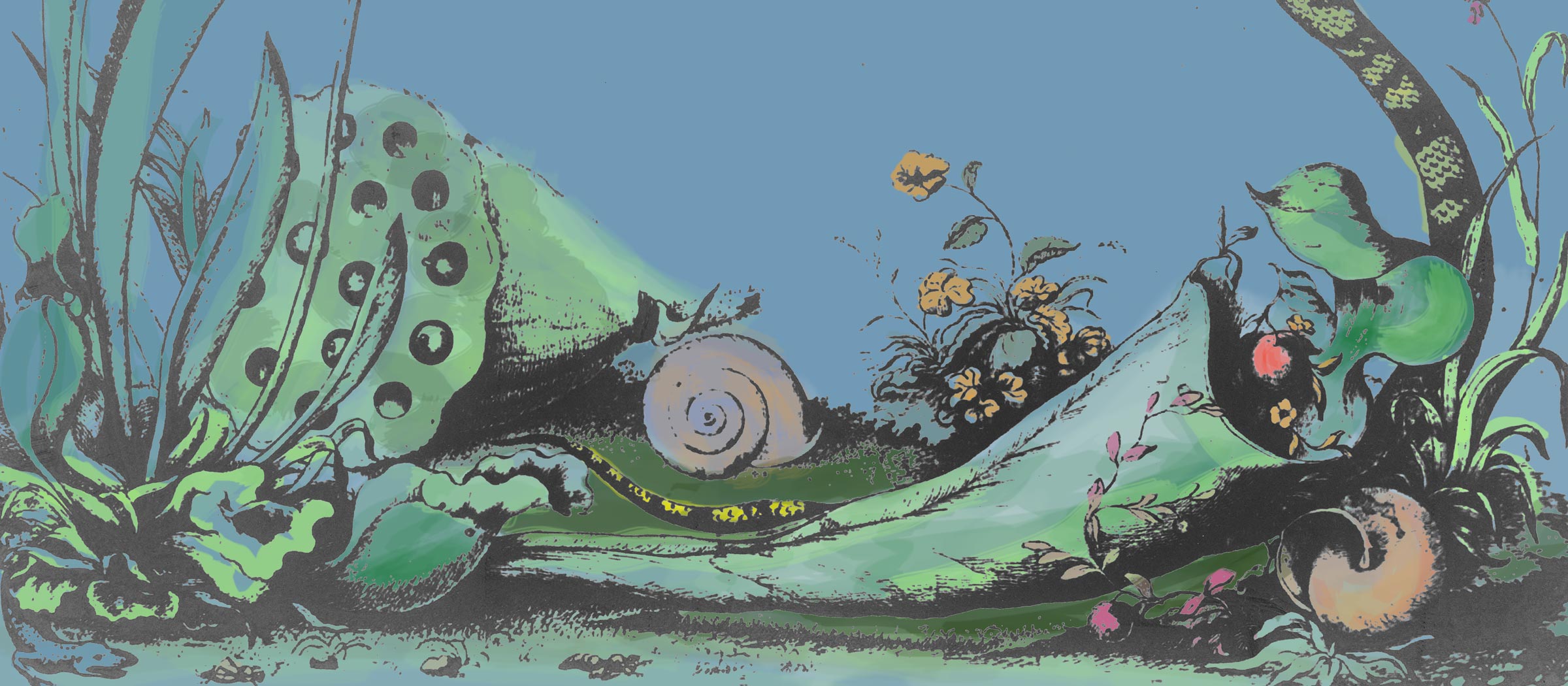Read & Grow: How Books Inspire Lifelong Plant Love

- Words by
- Caitlin McAtomney
- Images by
- Georgina Reid
Look up, look up, at any tree!
There is so much for the eye to see:
Twigs, catkins, blossoms; and the blue
Of sky, most lovely, peeping through
Between the leaves, some large, some small,
Some green, some gold before their fall…
From Flower Fairies of the Trees, Cicely Mary Barker, 1940.
One Saturday morning last December I strolled through my beachside Melbourne neighborhood towards the periphery of the St Kilda Botanical Gardens. I was armed with a hessian shopping bag and a pair of blunt paper scissors.
My mission was to surreptitiously forage for tree detritus (while avoiding the perplexed glances of nearby picnickers). Not content with tinsel or twisted green plastic, I had, the Christmas prior, decided to fashion our annual festive door wreath myself, using the foliage of local Australian native trees. This is perhaps an obscure undertaking in the minds of some, but for me it was an entirely typical project – one that combines plants, aesthetics and a connection to place.
My French partner observed as I littered the apartment floor with leaves. A satisfying circle of intertwined eucalyptus, beach casuarina and tea tree punctuated with gumnuts took shape. In passing, my partner queried the origins of my fondness for plants – a fondness that seems to perpetually manifest in so many little aspects of my life: the sculptural artwork comprised of individual flowers crafted from paper, old maps and magnolia twigs; the Charlotte Aux Poires crowned with purposefully-placed miniature daisies; the potted plants that adorn every available surface of our apartment; the photographic self-portraits overlaid with leaf skeletons; the innumerable Tumblr posts of curious images of plants; the collection of pressed flowers…
At the time, I could not pinpoint a primary source of influence. For something so pervasive and innate, I had rarely paused to reflect on how, why or from where this pull to plants had arisen.
But, being prone to ponder, the question lingered in my mind. Was this enduring curiosity and attraction to the aesthetics of plants a case of nature or nurture, or a bit of both? Are we born with such characteristic tendencies or are they fostered through experiences?
Certainly my parents are gardeners and I grew up exploring the outdoors with enthusiasm. I still vividly remember the day my seven-year-old self tried to bottle the intoxicating perfume of gardenia flowers by plucking every last white blossom from Mum’s backyard plant and boiling them to within an inch of their lives in a saucepan of water. (For the record, that doesn’t work – you’ll end up with a tea-coloured petal soup that smells vaguely of fermenting vegetation. Here ended my foray into perfumery.)
It was not until some days after the wreath-crafting when I was giving a bookshelf a much-needed dusting and combing paperback spines with my eyes that it dawned on me.
Books! A few pivotal childhood books have undoubtedly played a central part in inspiring my enduring plant-centricity.
Cicley Mary Barker’s Flower Fairies of the Trees, first published in 1940, was given to me by Mum and Dad when I was aged six. I treasured this delicate little book. It captured my imagination in a unique and delightful way. Each double-page spread of the book features a short poem and a colour illustration of a tree fairy. The illustrations combine the tree-dwelling fairy figures with the distinctive features of one particular tree species. The words and images have both captivating charm and botanical accuracy, and as a child I would wander the garden and picture myself as one these fairies, living a life in miniature amongst the plants.
Another classic piece of children’s literature that inspired wonder, curiosity and imagination in me was May Gibbs’ Snugglepot and Cuddlepie. The personification of gumnuts and banksia has had a lasting influence. I am continually attracted to these natural forms. Fittingly, the apartment in which I now live has pressed plaster ceilings with a decorative pattern that features gumnuts and flowering eucalyptus. The apartment is fondly referred to by the family as the ‘gumnut unit’.
The Secret Garden, written by Frances Hodgson Burnett was yet another childhood favourite that captured all the enchanting mystery, power and pleasure of plants and spoke of the inherent healing and regenerative qualities of nature.
Sometimes I take pause to imagine what life will be like for my children. What will motivate and fascinate them? In a world increasingly preoccupied with materiality and the self, perspectives are frequently focused inward. Life is mediated through digital screens. Appreciation for the simple things and the natural world is diminished. Imagination and exploration are stifled. Attention spans are limited.
Despite the changing nature of the world I know one thing for certain. My children will inherit my books. And if nothing else, I hope the wee ones will always take the time to look up – look up at any tree – for there truly is so much for the eye to see.
—




